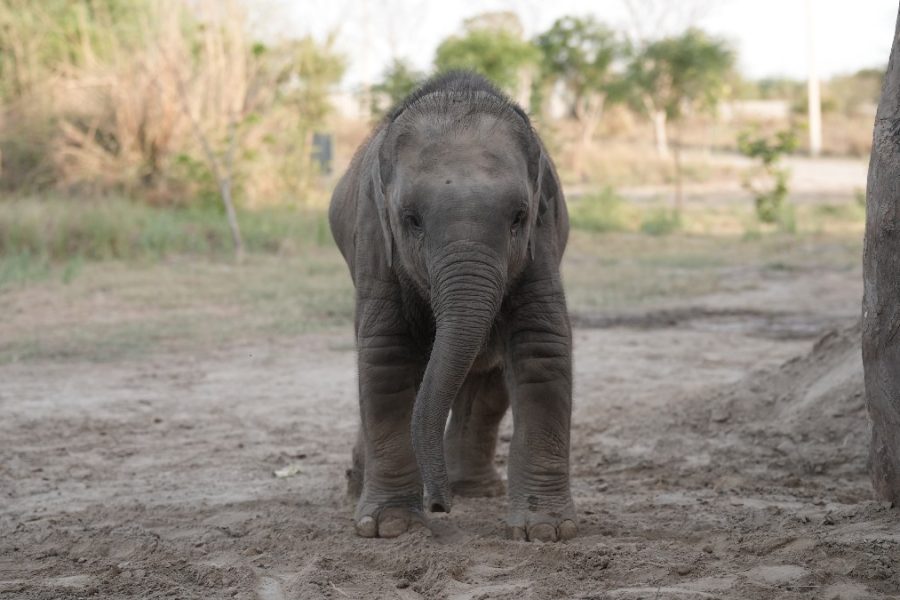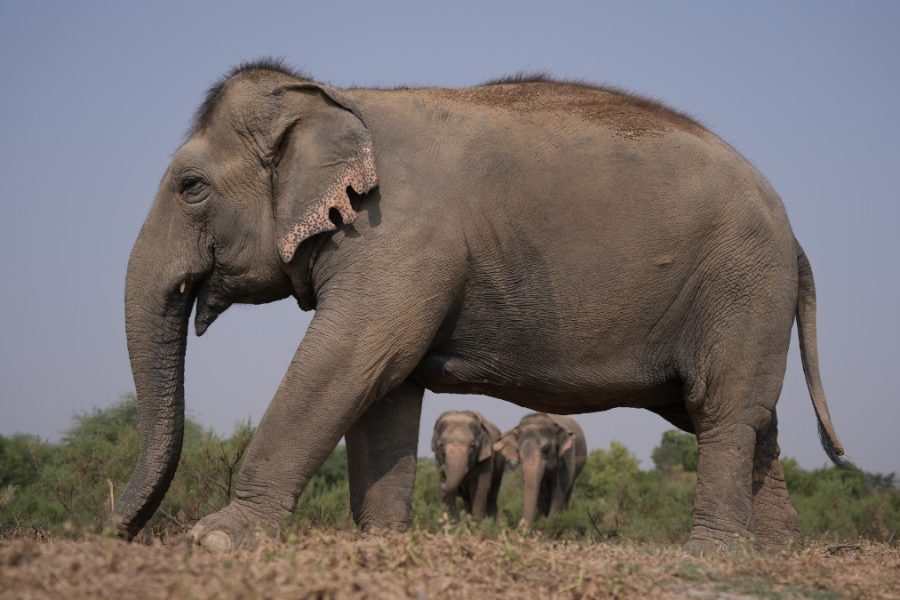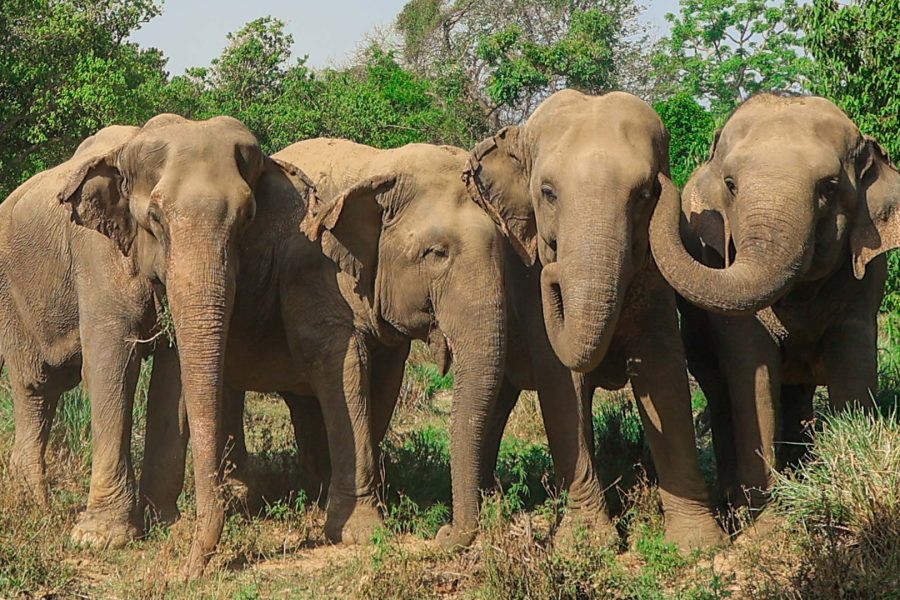Scientists have acknowledged for years that large animals like elephants play a crucial role in their habitats, bringing about significant positive changes. Elephants contribute extensively to the well-being of the surrounding plant and animal life. It is known that elephants neither serve as predators nor prey, thus posing no threat to indigenous wildlife wherever they reside. In fact, elephants offer substantial benefits to other species as they quickly learn to follow closely behind them. As the elephants graze on the greens, the large mammals end up disturbing tiny insects, which helps the birds to seize the opportunity to feed on them.
Additionally, when elephants defecate, a significant amount of mostly undigested seeds and grains provide easy food for deer, small mammals, birds, and fowl, among others. These waste deposits also serve as catalysts for new life, leading to the characterization of elephants as “nature’s gardeners”; it’s quite common to observe multiple plants growing directly from their dung piles. The softened seeds in a bolus are fertilised by the dung, and are infused with heat and moisture — they only require sunlight to grow!
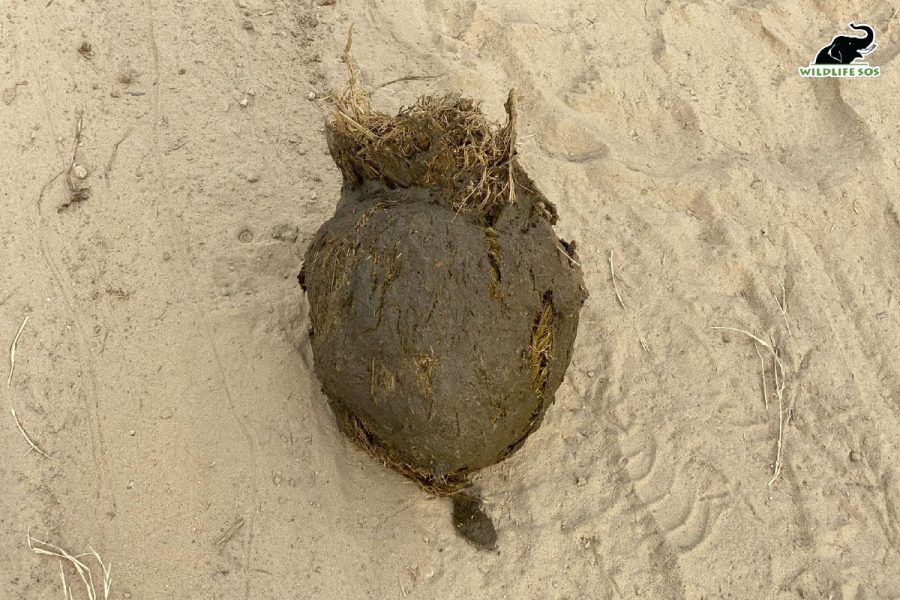
Seed dispersal is yet another significant contribution that elephants make to their habitats. Due to their long-ranging nature, they can spread seeds over several miles during their lengthy 20+ hour digestive cycle. Furthermore, they consume fruits from trees that only megafauna can access, thereby enhancing the diversity of vegetation within their range. Elephants are inefficient when it comes to digesting food and only absorb 35-40% of the nutrients in their diet, releasing a substantial amount of it to the soil. They enrich the earth by excreting key nutrients and organic matter, which attracts burrowing insects to aerate the soil around their waste.

While the above is observed with elephants in the wild, elephants residing in sanctuaries have provided similar benefits to the area they occupy. Over the last 14 years since Wildlife SOS started rescuing and rehabilitating elephants, the organisation has noticed the Elephant Conservation and Care Centre (ECCC) transform radically.
The Wildlife SOS ECCC was established in 2010 in the district of Mathura, Uttar Pradesh, with the primary objective to rehabilitate severely abused and exploited elephants. Today, ECCC is home to 16 rescued elephants. It is a living, breathing education platform to change public perception about gentle giants and support elephant conservation.
Every elephant at ECCC has been rescued from severe distress. Some were under private ownership and endured a cruel past of being exploited for begging or at processions, while others were confined to captivity, serving as temple or circus elephants. Freed from the burden of heavy loads and the ordeal of walking on scorching pavements, these magnificent animals now lead their lives in contentment. They receive regular baths, a nourishing diet, and excellent veterinary care, finally experiencing what they truly deserve.
As the elephants found solace in rehabilitation owing to Wildlife SOS continuous efforts, it seems that the elephants, in turn, decided to give back! With time, something remarkable unfolded at the centre. The elephants began to play a mighty role in the restoration of biodiversity in their surroundings. Through their presence and interactions with the environment, these pachyderms inadvertently became guardians of nature, bringing back flourishing flora and fauna within and around the centre.
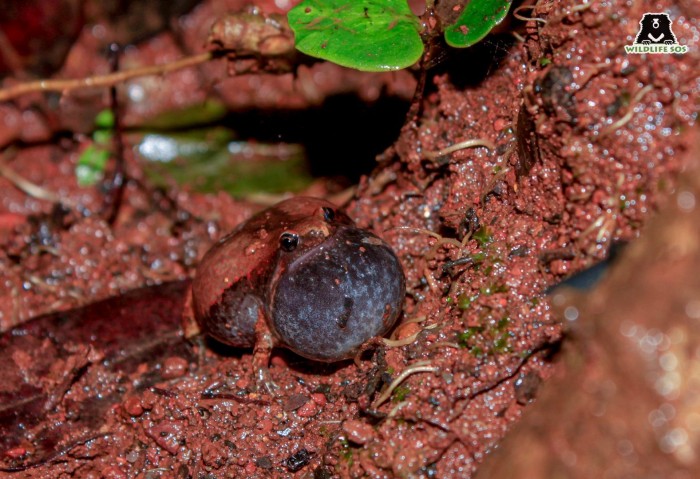
The positive impact of the elephants on the centre’s biodiversity is evident in the gradual increase in diverse plant and animal species. As the elephants traverse the rescue centre, their movements and behaviours aid in the dispersal of seeds, fostering the growth of various trees and vegetation. This symbiotic relationship between elephants and their habitat has led to the emergence of a thriving ecosystem teeming with life.
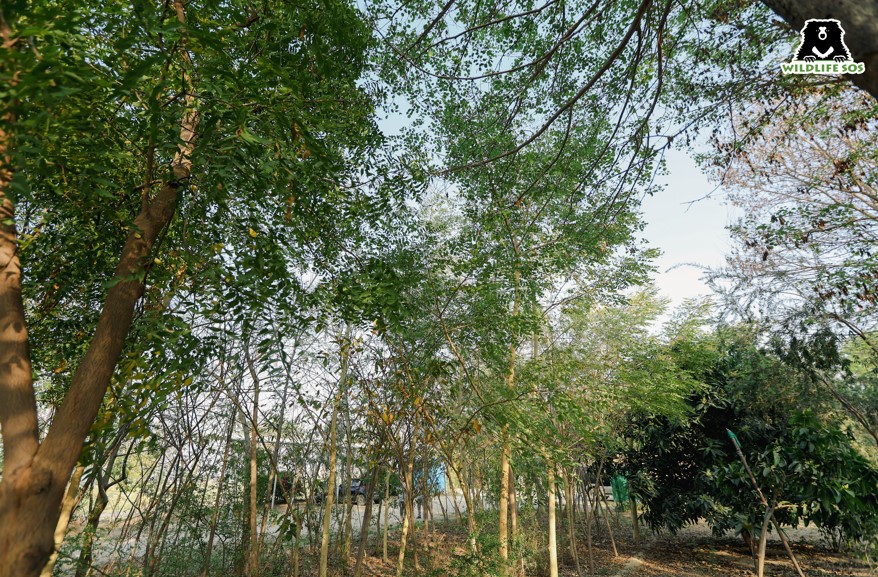
“When the centre was established, we wanted the surroundings to be as close to the wild as possible for the rescued elephants. So we planted numerous indigenous trees within the centre, following the Miyawaki Method. But I know a lot of the trees that we see at the centre now, have in fact been planted by the resident elephants themselves,” says Shivam Rai, who has been the Elephant Project Head Coordinator at ECCC for the last eight years.
Several indigenous plant species have been propagated by elephants around the centre premises, including mango, pumpkin, grapes, burflower, and black plum. These native species planted by the elephants in the centre have replaced the invasive acacia trees within the premises. This lush greenery has also led to a remarkable increase in bird species, which have grown from just 15 when ECCC was started to over 70 species spotted throughout the year. Many of these birds are migratory and are now spotted much more frequently during the season. Additionally, seven species of snakes such as Indian wolf snake, common rat snake and checkered keelback snake and other reptiles, such as monitor lizards and Indian garden lizards, have found a home amidst the greenery. Butterflies, which were only occasionally found before, now have at least six different species of their family in the area with species of the Nymphalidae family the most common.

Conserving a keystone species triggers a domino effect throughout the ecosystem. After scores of studies proving this, it is truly marvellous to actually witness the major role elephants play in their habitats. You too can experience the magic unravelling at ECCC by visiting and volunteering with us.


